Jewellery
An interesting subject is all kinds of jewellery. It doesn’t have to be expensive, made of precious metals and stones. Just poke around in drawers and boxes at home, and you will certainly find many interesting objects to photograph.
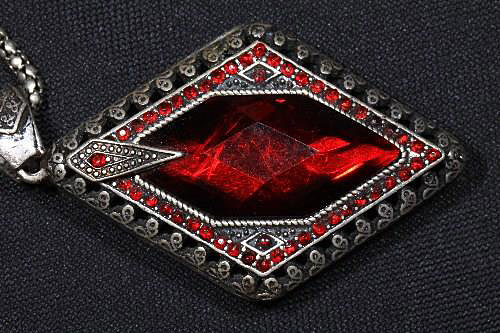
Canon 50d, Canon 100 mm L IS Macro, Macro Twin Lite MT-24 EX flash
A pedant with glass imitation ruby. The red light reflections on the big crystal look like red-hot coals.
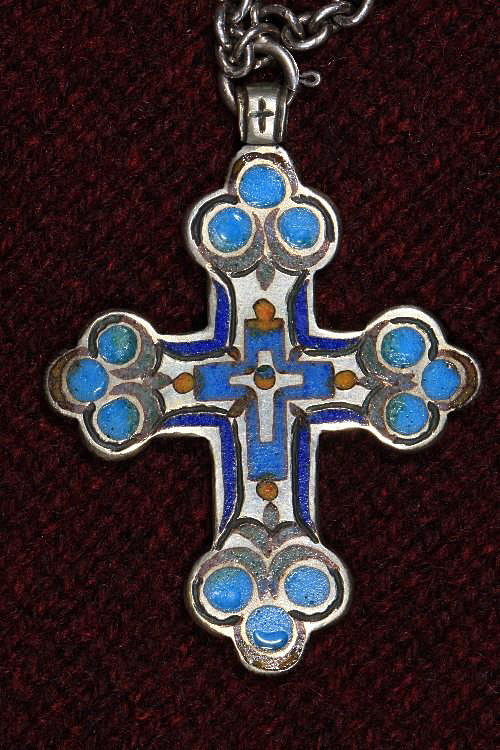
Canon 50d, Canon 100 mm L IS Macro, Macro Twin Lite MT-24 EX flash
An antique silver Russian cross aditionally decorated with enamel. When photographing jewellery, you have to think about such a background on which it will look best. This is often done on a uniform matte black background which I think is not the best idea. Jewellery looks like a lonely planet suspended in a vacuum then, whereas it was created as an ornament of the body when combined with a particular garment, fabric and colour. Therefore, different fabrics (not too much eye-catching) with subdued colours can make a good background.
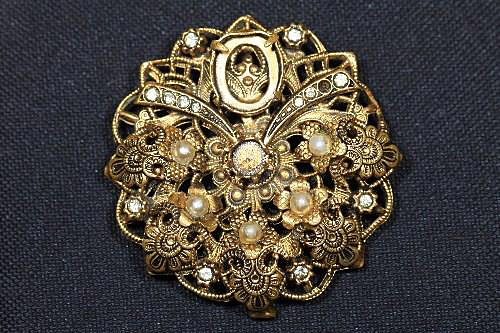
Canon 50d, Canon 100 mm L IS Macro, Macro Twin Lite MT-24 EX flash
An imitation gold brooch set with fake diamonds and pearls. Only in close-up you can see how tacky such things are.
When photographing bright shiny objects on a dark background, we need to ensure adequate exposure. If we use the matrix metering, photo will be too bright. We can use spot or center-weighted metering, but it is better to have a reasonable degree of exposure compensation or, when using the flash, the flash compensation. It is best to set the degree of compensation with a few test shots. The exposure and adaquate ligting when photographing jewellery are also very important for other reasons. Have you ever wondered why, for example cut diamonds or other clear minerals, sparkle with all the colours of the rainbow? They act like prisms splitting white light into the whole spectrum. Natural diamonds have a relatively low degree of dispersion, which means they sparkle with the colours of the rainbow less than minerals with a higher degree of dispersion. This, among other things, distinguishes the original from the forgery. If someone tried to photograph these very light effects, they were certainly disappointed after seeing the photo. The eyes saw the crystals sparkling with all the colours of the raibow, whereas the camera registered colourless, lacklustre pieces of glass. I tried to understand why it was happening while photographing metal cube set with plenty of polished pieces of glass imitating diamonds. When we look at the cube, especially when illuminated by sunlight, it sparkles with lots of multi-coloured sparks. If you take a picture of it , you have to move the lens in different directions many times before you find at least one such spark as the one in the picure.
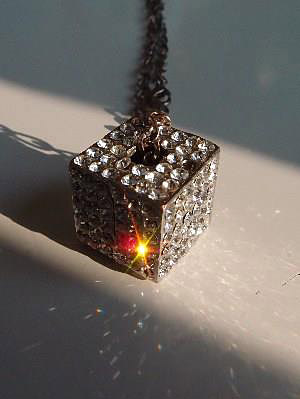
Olympus XZ-1
Observing the reflected light spots on the surface next to the cube, I came to the conclusion that colourful split spots are not as densly strewn. Why then, when we look at the cube, we can see colourful reflections in the background? Perhaps it is connected with the fact that looking at the object we do not stand completely still. When we move, we can see different reflections sparkle. Moreover, our eyes are extremely sensitive organs. Surely, anti-reflective coatings of glass also contribute to such impression and maybe the camera software itself eliminates such effects. Another physical phenomenon with which we often deal in macro photography is iridescence. It consists in forming of rainbow colours on the surface of transparent or translucent objects consisting of many layers with different optical properties. This phenomenon can be observed on the shells of molluscs, the wings of butterflies, minerals, the shells of insects, brids feathers, fuel stains, soap bubbles and sometimes clouds. It happens when light waves are reflected from both the outer and
inner surface of the transparent layer and then interfere, i.e. overlap each other, creating waves of diffrent frequencies.
When taking the following picture, with a lot of effort, I managed to capture three such sparks, each of a different colour in addition. I placed the cube in strong winter sunlight against a background of the navy blue polished agate plate. I used spot metering with -0.3 EV correction so that the cube was not too bright and the background not too dark as I wanted the colourful sparks to be clearly visible.
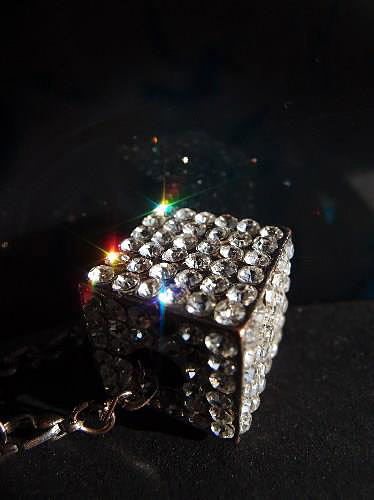
Olympus XZ-1 f 3,5 ISO 100
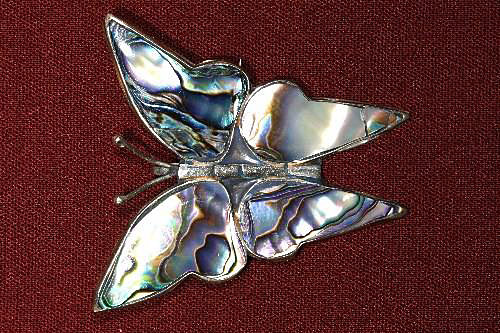
Olympus XZ-1
The brooch covered with irisating mother-of-pearl.
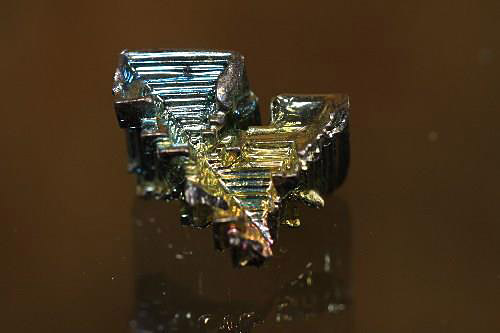
Olympus XZ-1
Iridescence on an artificially produced bismuth crystal.
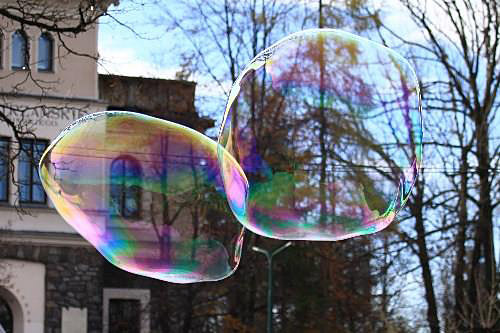
Canon 50d, Canon 100-400 mm L IS 1:4,5-5,6 USM
Iridescence on the soap bubbles.
The similar effects are produced by the phenomenon of diffraction which consists in bending of electromagnetic waves passing through the small openings. If there are plenty of such openings and they form a regular grid, the bended waves interfere with one another and form colourful effects. The same thing happens on the surface that reflects light and is covered with grooves, for example a CD. Observing, at a certain angle, the light that was reflected from it we can see rainbow-coloured effects.
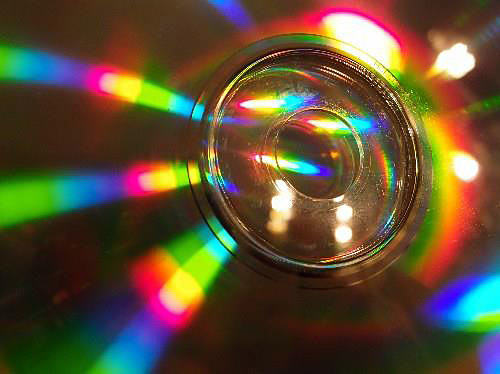
Olympus XZ-1
Diffraction also occurs when the transparent material is composed of many layers or spheres. Many beautiful butterflies, among other the Menelaus Blue Morpho (Morpho menelaus), and our native Purple Emperor (Apatura iris) owe their unique colours to this phenomenon.


